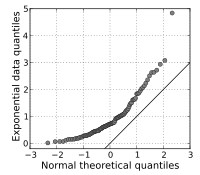
Photo from wikipedia
Abstract In the Sahel region, farmers have adopted various farming practices to improve agricultural yields in order to offset an increasingly variable climate regime and the extension of degraded land.… Click to show full abstract
Abstract In the Sahel region, farmers have adopted various farming practices to improve agricultural yields in order to offset an increasingly variable climate regime and the extension of degraded land. This study analyses the functional behaviour of such three selected water-harvesting techniques (stone rows, zai and half-moon) as compared to the traditional tillage method through a comprehensive experimental setup monitored during three consecutive growing seasons (2015–2017). The results indicate that these farming practices allow a runoff reduction by 25 to 100%. We propose a continuous model simulating the hydrological dynamics of the farming techniques at plot scale. This model is able to reproduce accurately the observed runoff (R2 = 0.73 − 0.95), and gives an insight of the variability of the water storage for each type of techniques in response to the rainfall regime. It appears in particular that zai and half-moons are able to mitigate the effect of dry spells by sustaining available water for crops over extended periods up to three weeks, whereas the direct seeding and stone row techniques rapidly leads to plant water deficit after five days. Even though water infiltration is essentially fostered by surface water retention during rainfall events, our observations suggest that the changes induced to the hydrological dynamics by farming practices also affect soil physical, chemical and biological properties. These effects help completing the explanation of crop yield improvements, but raise some questions of soil evolution and farming practice performances in the long run.
Journal Title: CATENA
Year Published: 2019
Link to full text (if available)
Share on Social Media: Sign Up to like & get
recommendations!